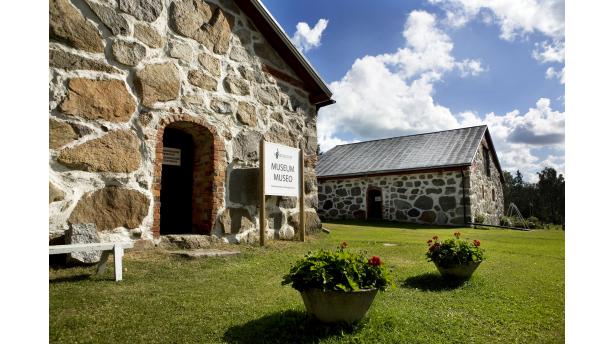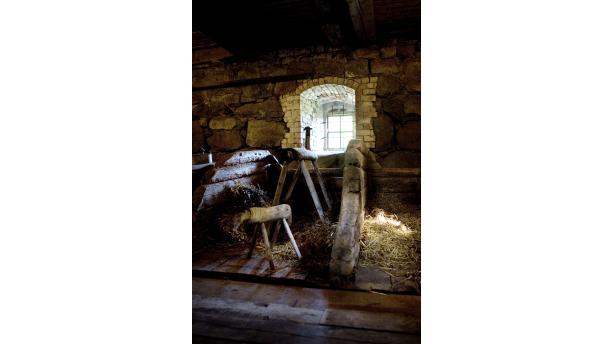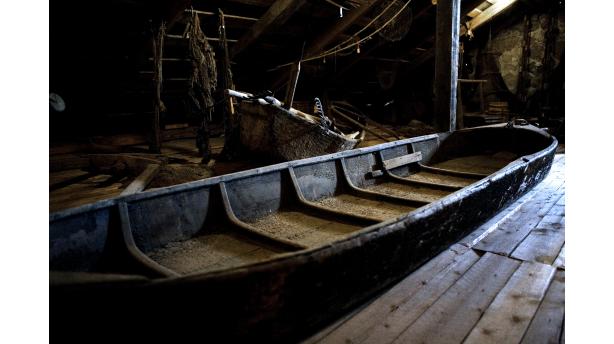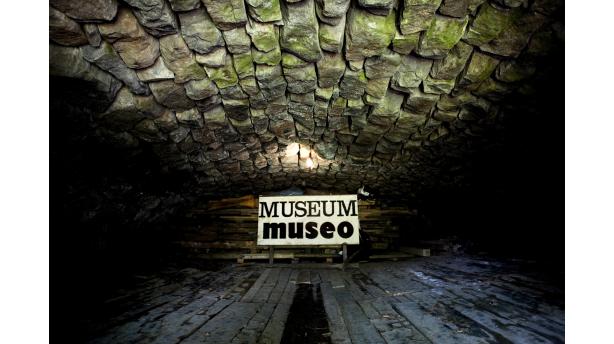Lifting of the so called confirmation school stone weighing 112 kg used to be a test of masculinity for the young boys of the region. The stone, which used to stand next to the Pedersöre church, is now displayed in the museum.
Museum A-Ö » Pedersöre Museum
Pedersöre Museum




Did you know...
Lifting of the so called confirmation school stone weighing 112 kg used to be a test of masculinity for the young boys of the region. The stone, which used to stand next to the Pedersöre churc ...
The Pedersöre Museum is situated in the 18th century stone cowshed of the Rosenlund vicarage. In the unique and idyllic surrounding is displayed an extensive collection of textiles, peasant artefacts and agricultural and fishing equipment of the region. The objects exude the joy of inventiveness. Visit the museum during the folk musician church service in July.
On the two floors of the big and stately stony cowshed are displayed the old peasant way of life and agriculture in the Pedersöre region. Among the objects are for instance agriculture and forestry tools, hunting equipment as well as tools of a carpenter and a shoemaker. There is also a nearly complete plater’s workshop from the beginning of the 20th century with some furniture and tools in the museum. In the stable can be seen items and furniture from a peasant house, as well as a beautiful collection of old time toys.The items in the museum reflect the peasants’ inventiveness, and on view are for instance a predecessor of the Hankmo harrow, a potato harvester and a mechanical loom made by master Mattson himself in the 1860-1870s. A cart is inventively equipped with springing made of wood.
In addition to the item collection the building itself is a pearl. The stony cowshed dating back to the 1770s is made of grey stone. The cowshed stems from the time, when Gabriel Aspegren worked as the provost in the Rosenlund vicarage. The building was at that time one of the largest and stateliest stone cowsheds in the country, and it is one of the few preserved stony cattle sheds in Finland. The Aspegren cowhouse was, however, not only big, but also ahead of its time. There was an indoor well and water channels in the building, a fireplace, a dung cellar under the cowhouse and a drawbridge to the hay balcony. The cattle shed is composed of a cowhouse, a fodder barn, a sheep barn and a stable. The large attic space on the upper floor was used as a hay balcony. In the dung cellar are arched vaults made of grey stone.
There is also a drudge cabin from the 1790s on the area, where textiles are on display. On the upper floor of the barn is a maid’s chamber with its textiles. The museum was founded in 1954 by the regional society Pedersörenejdens hembygdssällskap. In addition to the museum, the society maintains the regional archive covering the estates of Pedersöre, the society and village archive and the person archive.
During the summer theme exhibitions are set up in the cowshed, the drudge cabin and the museum area. The museum is open mainly in the summer, but in December a Christmas fair takes place on the area. During Jakob’s Days in July a grand and popular folk musician church service is arranged.



